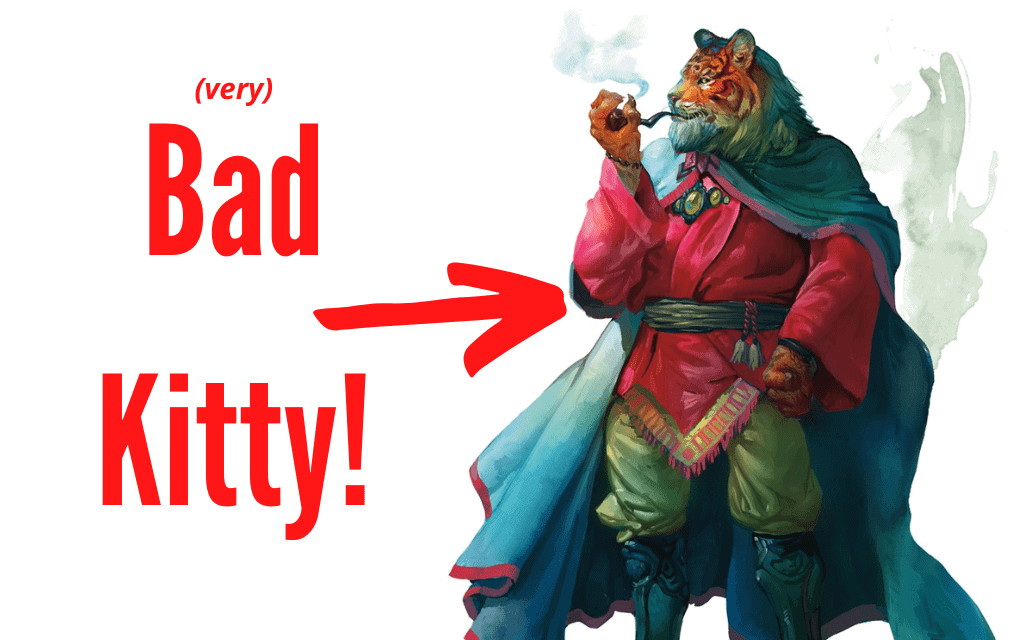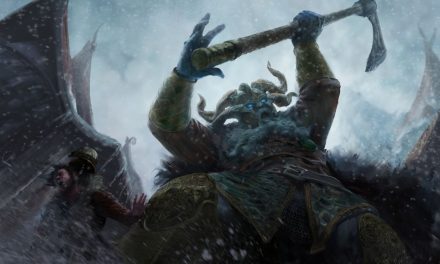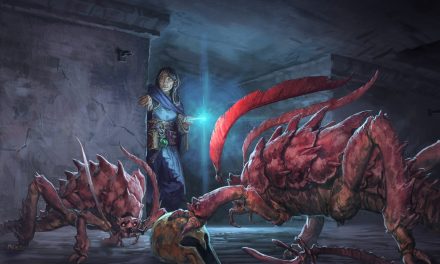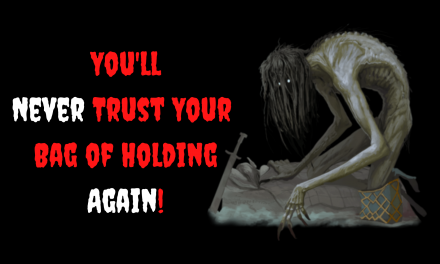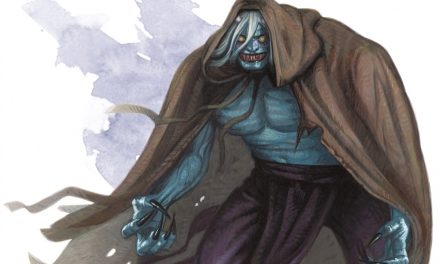To encounter a Rakshasa in D&D 5e is to encounter pure evil itself.
Originating from the Nine Hells, these beings weave elaborate schemes on the Material Plane. Craving positions of power, they masquerade as nobles, cardinals, or other figures of influence and authority. In these disguises, they surround themselves with only the finest of indulgences.
But don’t mistake their love of decadence for weakness if you plan to survive! Beneath the surface of whatever form the Rakshasa is taking, there exists only malice and a hunger for flesh.
Today we’re taking a closer look at one of the most diabolical fiends in all of D&D 5e: the Rakshasa.
Rakshasa in D&D 5e
I have a special love for creatures in D&D that are based on real-world mythology. While most examples of this in D&D tend to be of European origins, the Rakshasa comes to us from Indian mythology.
You can see the comparison between the mythological version and D&D version of the Rakshasa (and many other monsters!) in my article covering monsters from real-world mythology. For this article, we’re focusing exclusively on how they are presented in-game.
I’ve been eager to write this article for quite some time, so let’s get right into it!
Physical Description
It’s remarkably rare to see a Rakshasa’s true form. In most cases, seeing it in this form means it’s already too late for you. After all, they’re very clever shapeshifters!
The Rakshasa’s true form is that of a humanoid body with the head and claws of a tiger. They will typically be adorned in particularly fine clothing and jewels as yet another symbol of their power and influence.
A particularly noteworthy feature of the Rakshasa’s true form is its hands. The Rakshasa’s hands are inverted so that its palms are where the back of a human’s hand would be.
In a way, this deformity works as a metaphor for the Rakshasa’s twisted desires regardless of whatever kind words may come from its mouth.
On average, Rakshasa stand between 6 and 7 feet tall.
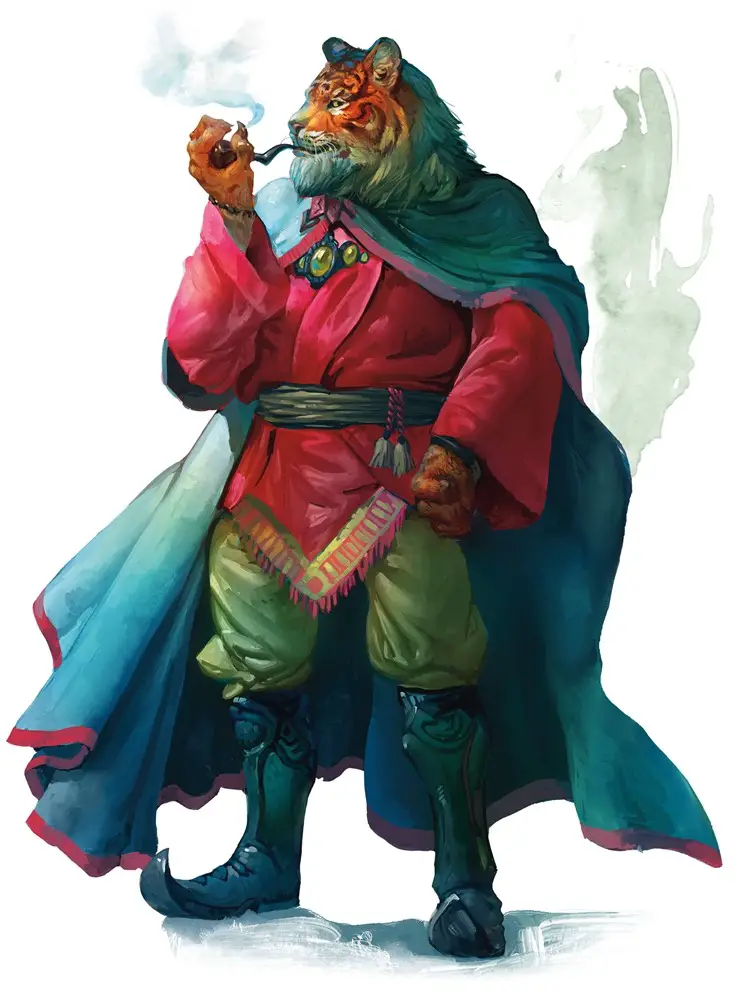
Origins of Rakshasa in D&D
Rakshasa are fiends originating from the Nine Hells. They were initially created by powerful devils who sought to escape the Lower Planes by freeing their fiendish essence.
On the Material Plane, Rakshasa prove to have the same talent for manipulation as one would expect from devils in the Lower Planes. Almost effortlessly, Rakshasa are able to find themselves in positions of great power and influence on the Material Planes. From that position of authority, who knows what diabolical schemes it is able to accomplish?
While a Rakshasa may outwardly portray themselves as opulent, refined, and genteel, it is all an act. The dark origins and motivations that created Rakshasa are still present beneath the surface.
Rakshasa Goals
More than anything else, Rakshasa desire power and control over others. This pursuit is an obsession and a Rakshasa will never be satisfied until it has gained supreme power.
In pursuit of this power, Rakshasa use their gifts for misdirection, manipulation, and clever schemes to achieve their goals. In a way that would make Machiavelli raise an eyebrow, few are able to outwit a Rakshasa in a game of intrigue and everyone is ultimately disposable in its plans.
Additionally, they have an endless hunger for the flesh of humanoids. Adorned with exotic spices and served alongside a decadent spread, Rakshasa enjoy the indulgence of the affair. They’re very similar to horror-icon Hannibal Lecter in how they conduct themselves!
Rakshasa are purely evil by their very nature and stand completely opposed to anything that could be considered good. As such, there would have to be an extreme reason for a Rakshasa to be anything other than truly evil.
That said, they aren’t necessarily unreasonable.
Rakshasa do enjoy schemes and their talents for shapeshifting and manipulation can easily lead to them pulling the strings for a group of adventurers like a puppet.
Even if the party were to determine the Rakshasa’s true origin/nature, they might find that their interests align for a time. Of course, this may all be an elaborate scheme on the Rakshasa’s part to get the party to do its dirty work before they find themselves on the dinner table.
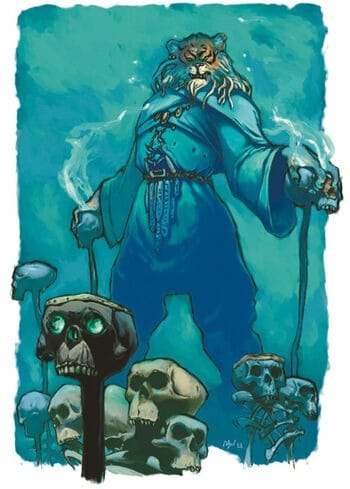
Rakshasa Abilities
First and foremost, Rakshasa are exceptionally gifted spellcasters.
With intrigue and misdirection being their area of expertise, it’s no surprise that Rakshasa can cast Disguise Self, Detect Thoughts, Mage Hand, and Minor Illusion at will.
Three times per day, the Rakshasa can cast Charm Person, Detect Magic, Invisibility, Major Image, and Suggestion.
Once per day, they can cast Dominate Person, Fly, Plane Shift, and True Seeing.
This spell selection gives the Rakshasa more than enough ways to accomplish their evil schemes. Whether it’s magically gaining new friends, sabotaging their rivals, or making a quick escape, the Rakshasa has plenty of resources.
If backed into a corner, the Rakshasa can also make two attacks with its claws.
The damage from the claws is pretty light, but the curse that they inflict can be devastating. Until the curse is removed by a Remove Curse spell (or something similar) the cursed creature doesn’t gain any benefits from short or long rests. They wake up constantly throughout the night due to the horrible images and nightmares projected onto them by the curse.
Oh yeah, there’s no save against this by the way. If the Rakshasa hits you with its claws, the curse applies.
Even More Challenging
Call me sadistic, but I can’t think of any good reason not to give the Rakshasa at least one powerful magic item.
These are creatures who crave as much power and fine things as possible. Why wouldn’t a Rakshasa expend any number of resources necessary to acquire a powerful magic item?
It might be something like a bottle containing a Genie that the Rakshasa seeks to gain a Wish from. Perhaps a defensive magic item like a Cloak of Displacement that makes them harder to hit if someone tries to attack them?
This magic item could be used by the DM as a MacGuffin to bring the Rakshasa into the story. (Perhaps the party thinks the Rakshasa is just a noble and unwittingly play into its hands… err… paws?)
Or it could just simply be a way to make the Rakshasa even more terrifying while potentially offering an extra reward if the party is able to defeat them.
Rakshasa choose their prey with great care and would give the same level of attention to a magic item that they want. It should be very rare, very powerful, and never left unattended by the Rakshasa.
When considering a Rakshasa’s abilities, factor in that of any magic items they’ve acquired in their schemes.
Immunities and Vulnerabilities
As fiendish beings with a powerful and innate command of the arcane, only the most powerful magic can affect a Rakshasa.
Unless it wishes to be affected by a spell of level 6 or lower, it can’t be affected or detected by magic. Even among spells and magical effects that are higher than level 6, the Rakshasa has advantage on its saving throws.
However, the Rakshasa is no slouch when it comes to melee damage as well!
Rakshasa have resistance to bludgeoning, piercing, and slashing damage from nonmagical attacks. This means that you’re only dealing half as much damage unless you have a way to overcome this resistance.
This leads into the Rakshasa’s one vulnerability…
Rakshasa are vulnerable to piercing damage from magic weapons that are wielded by a Good-aligned creature.
It’s specific, but worth figuring out how to pull off if you want to be dealing twice as much damage! If your Bard or Rogue has a magic rapier (and is of Good alignment), they could very well become your best bet in a fight against a Rakshasa!
Evil Reincarnated
The odds are very good that you haven’t seen the last of a Rakshasa if you manage to slay it. As true fiends, they are known to be very vindictive and will not rest until they can have their revenge on whoever slayed them.
You see, Rakshasa can’t truly die on the Material Plane. Instead, their essence is returned to the Nine Hells.
In the months or years that it takes for the Rakshasa’s body to reform, the Rakshasa is forced to wait in a tortured state of incredible agony. The longer this process takes, the more time the Rakshasa has to obsess over its revenge.
Regaining its form, the Rakshasa still possesses all of its memories and knowledge. While it will certainly begin rebuilding its previous life of decadence and power, revenge is its number one priority when it returns to the Material Plane.
If the Rakshasa isn’t able to track down the one who slew it, it won’t hesitate to turn its attention to that person’s friends, family, or descendants.
The only way to truly kill a Rakshasa is to slay them in the Nine Hells. Because they are quick to make their way out of the Lower Planes, this is very difficult to accomplish.
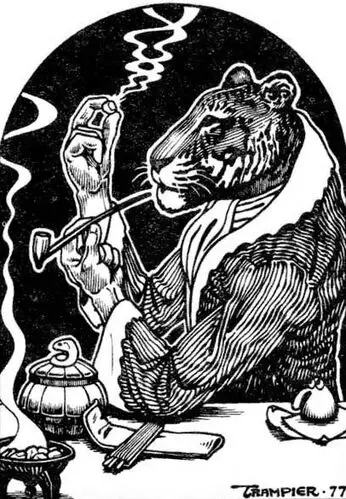
Encountering a Rakshasa
So, we’ve gone over Rakshasa, their abilities, and general motivations.
But how do they work in an encounter?
We’re going to look at Rakshasa from two different perspectives. First, we’ll look at how to run a Rakshasa as a DM. Next, we’ll look at what players can do to hopefully survive such an encounter!
Running a Rakshasa as a DM
As a CR 13 enemy, Rakshasa are more appropriate for high-mid level characters to encounter. It might be masquerading as another NPC well before that, but even a “level appropriate” encounter isn’t likely to go the party’s way.
Rakshasa are schemers and con artists who have plenty of methods for getting their way. It’s likely that a Rakshasa might function as a quest-giver at first who gains the party’s trust. Meanwhile, the party is handling dirty work for the Rakshasa who might ultimately be planning to devour them one by one.
A combat encounter with a Rakshasa is actually quite straightforward. Spells like Invisibility and Fly can help them maintain some level of control on the battlefield, but they don’t particularly have much in the way of offensive magic.
The Rakshasa’s claws can easily ruin a PC’s day/week until the curse is removed, but the Rakshasa isn’t exactly built for combat. Of course, its resistances and immunities do make it tougher than one might initially expect.
Nevertheless, it will likely try to get a few swipes in and then make its escape.
As a predator, it will go for the party members that it can most easily hit. A heavily armored Paladin would put up much more of a fight than the Rakshasa cares for. Instead, the Rakshasa might look to make an example out of a squishier party member like a Wizard, Sorcerer, or Rogue.
If necessary, its Plane Shift spell makes for a great “panic button” particularly if the party has managed to deal any mentionable damage to it.
Related: Reviewing The Best Collection DM Combat Tactics Out There
Social Backlash
What a Rakshasa WILL do, however, is use its position in society to turn the people against the party. Remember: Rakshasa masquerade their way to positions of authority and command great power over others.
The party may have protected the city against enemies in the past, but now they’ve been declared Public Enemy Number One by the Archbishop (who is actually the Rakshasa in disguise.) As the “Archbishop” uses their influence to gather further support against the party, what does the party do?
Now the entire city believes that the party are the villains!
Rakshasa aren’t typically the smartest creatures, but their talents as manipulators are hard to deny. To stand against a Rakshasa is to also stand against everyone who has found themselves unknowingly in the Rakshasa’s web of intrigue and deception.
Rakshasa make for excellent villains because of this. Encounters should be memorable and terrifying. A particularly arrogant Rakshasa might even choose to show its true form to a particularly troublesome party with a taunt of “nobody will ever believe you.”
Think of it as a grand game of cat and mouse. (Pun slightly intended…)
If you’re looking to run a Rakshasa, you should check out my article on the 8 Types of Power. That article takes a closer look at villainous goals and how the villain goes about pursuing them.
Encountering a Rakshasa as a Player
Rakshasa really shake up the typical type of encounter in D&D 5e. They are incredibly resistant to most damage but don’t put out a lot of damage themselves. However, they have endless other ways that they can destroy a party.
Dealing with a Rakshasa will very quickly turn into a war of attrition instead of the typical combat brawl.
For starters, the party will need to act decisively. The Rakshasa has plenty of ways to escape. If it manages to get away, that means that it’s only a matter of time before things start turning against the party in some major ways.
Spells of 6th level or lower are useless here. This means that casters like Druids or Wizards would need to be level 13 or higher to cast a level 7 spell to do anything. Even then, the Rakshasa will have advantage on its save.
Spellcasters in such an encounter are better off finding ways to magically support their allies. If you want to have a chance at dealing with a Rakshasa before it can escape, putting as many buffs as possible on Good-aligned party members using piercing weapons is your best bet.
By the time a Rakshasa is approaching 50-60% of its hit points, it will be looking to escape as quickly as possible.
If your party is planning to attack a Rakshasa, you’ll want to have a clear plan. The only way that you will be able to beat it is if you can deal enough damage in a single round before it can escape.
Celebrate your victory if you manage to beat the Rakshasa, but don’t rest on your laurels. There’s no telling when, but the Rakshasa WILL be coming back for revenge…
Conclusion – Rakshasa in D&D 5e
It’s hard to overstate how much potential Rakshasa have as villains in 5e. They can very easily become or overshadow the BBEG of a campaign.
While Rakshasa might not have the same popularity of other OGs (like Beholders or Mind Flayers) from D&D’s history, there’s a reason they’ve been around in every edition from the very beginning!
There’s something so extra insidious about how they operate that really makes them stand out. By the time a party figures out the Rakshasa’s identity, they’ve already been playing its game for quite a while.
Have you ever encountered a Rakshasa or have some fiendish ideas for using one in a campaign? Let’s chat about in the comments!
Want to stay up to date with all of the latest monster features, DM Tips, player guides, and more for D&D 5e? Subscribe to my newsletter using the form below!

